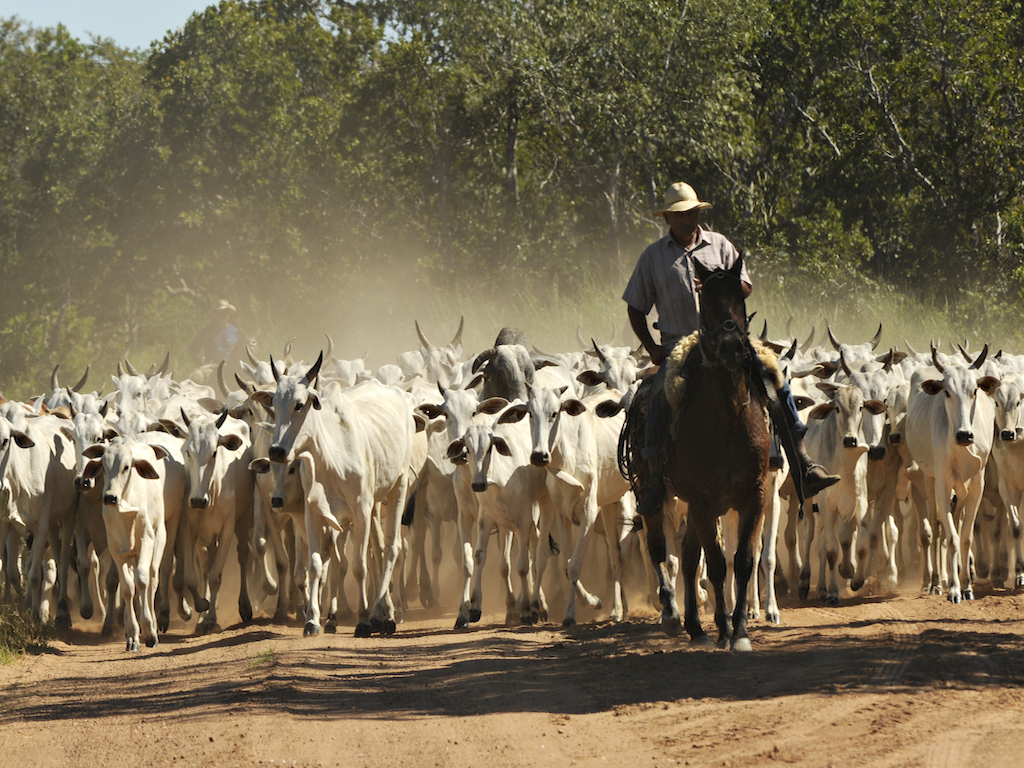4 Mins Read
In Brazil, wildfires are deliberately started by farmers to make room for more animal agriculture, which dominates the Brazilian export industry. This has caused an alarming increase in deforestation rates, which contributes directly to climate change.
Earlier this month, Brazil declared a state of emergency over the spike in the number of fires in the region. So far, Brazil’s space research centre INPE has detected over 73,000 fires – the highest on record since 2013 and an 83% increase from the same period last year. The fires have gotten so out of hand that they can be seen from space.
What Caused The Fires?
While the climate of the Amazon rainforest is usually wet and humid, July and August represent the beginning region’s dry season, which makes wildfires more common. But wildfires are also deliberately set, often illegally, by farmers who wish to deforest land for cattle ranching.
The two states where Brazil’s animal agricultural frontier has pushed into the Amazon rainforest basin, Mato Groso and Para, have recently experienced an unprecedented spike in the number of fires. Enraged by the rise in deforestation, commentators have criticised President Bolsonaro’s lax stance on farming and mining since he took office in January. Often used to clear land for additional pastures to home livestock, the vast majority of the wildfires can be attributed to humans, said Christian Poirier, program director of the non-profit Amazon Watch.
Why Are Farmers Clearing Forests?
Brazil, home to an estimated 200 million cattle, is the world’s largest beef exporter, supplying approximately a quarter of global imports. The country’s far-right President, Jair Bolsonaro, is by all accounts a supporter of the clearing of the rainforests by cattle ranchers, and stories of ranchers organising “fire days” to clear land for pasture have emerged.
Emboldened by lax regulations and monitoring of illegal logging and farming, farmers are setting fires to clear forests for additional pastures to raise livestock to meet global demand for meat and dairy. Compared to World Bank data from 1970, over 90% of the cleared land in the Amazon region has already been converted to cattle ranching. As the world’s population continues to grow, urban cities have seen a rise in affluence and increasing adoption of Western-style meat-heavy diets, the demand for beef has shot up. For example, Hong Kong has seen record-breaking levels of consumption of meat, dairy and eggs in recent years.
In Brazil, where the input cost is low and transportation to rural areas is easy, ranching is an attractive economic activity for farmers. With global demand for meat and dairy continuing to rise, many ranchers have taken on this opportunity to push further into the Amazon basin to continue exporting huge amounts of beef and poultry to destinations around the world. Besides raising livestock, rainforests have also been cleared to grow soybeans, of which 70% is used for animal feed.
In short, global demand for meat is driving deforestation.
How Is This Connected To Climate Change?
According to the Global Forest Atlas compiled by the Yale School of Forestry & Environmental Studies, cattle ranching is the largest driver of deforestation in every single Amazon country, accounting for over 80% of current forest destruction rates.
Rainforests, which absorb carbon from the air, are one of the world’s most important tools to slow down rising temperatures. Fires ravaging the Amazon rainforest are therefore destroying one of the greatest natural assets remaining on the planet to tackle our current climate crisis.
As most of us know by now, the livestock industry is itself a major greenhouse gas polluter driving climate change. Animal agriculture – aka the raising of livestock for meat, eggs and dairy – generates a whopping 14.5% of global carbon emissions, greater than all transportation combined. In the process, the industry also causes land erosion, biodiversity loss and water pollution.
In a recent release, Greenpeace has made it clear that forest fires and climate change operate in a vicious circle. As the number of wildfires increase, greenhouse gas emissions increase too – making global temperatures rise as well. In turn, global warming makes extreme weather patterns such as droughts and cyclones more likely.
This year, 228 mega tonnes of carbon emissions have been released into the atmosphere, marking the highest level since 2010, according to the Copernicus Atmosphere Monitoring Service.
“In addition to increasing emissions, deforestation contributes directly to a change in rainfall patterns in the affected region, extending the length of the dry season, further affecting forests, biodiversity, agriculture and human health,” stated Greenpeace’s report.
Lead image courtesy of WWF.




